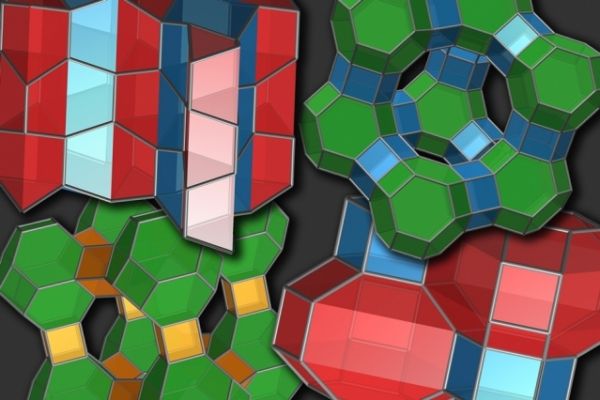Zeolites are a class of natural or manufactured minerals with a sponge-like structure, riddled with tiny pores that make them useful as catalysts or ultrafine filters. But of the millions of zeolite compositions that are theoretically possible, so far only about 248 have ever been discovered or made. Now, research from MIT helps explain why only this small subset has been found, and could help scientists find or produce more zeolites with desired properties.
The new findings are being reported this week in the journal Nature Materials, in a paper by MIT graduate students Daniel Schwalbe-Koda and Zach Jensen, and professors Elsa Olivetti and Rafael Gomez-Bombarelli.
Previous attempts to figure out why only this small group of possible zeolite compositions has been identified, and to explain why certain types of zeolites can be transformed into specific other types, have failed to come up with a theory that matches the observed data. Now, the MIT team has developed a mathematical approach to describing the different molecular structures. The approach is based on graph theory, which can predict which pairs of zeolite types can be transformed from one to the other.
Read more at Massachusetts Institute of Technology
Illustrations: Traditional structure-based representations of the many forms of zeolites, some of which are illustrated here, provide little guidance as to how they can convert to other forms, but a new graph-based system does a much better job. Illustrations courtesy of the researchers


